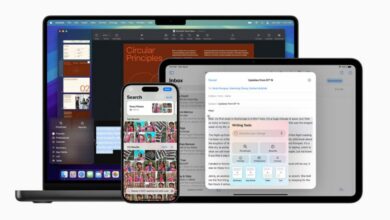3 Benefits of AI Live Support in Improving Customer Experience


There has never been a greater demand for exceptional interactions between businesses and consumers than today: 80% of customers say their experience with a business is as important as their products or services. But the public’s definition of exceptional has also increased.
Businesses have one hour to resolve customer service tickets if they want to meet their customers’ expectations for quality service. According to HubSpot’s 2024 State of Customer Service report, 21% of customers expect their ticket to be resolved immediately, while 23% expect it to be resolved within an hour.
Agents must find ways to respond to an average of 17,630 support requests per month — about a hundred tickets per hour for the typical 9-to-5 worker. AI chatbot support lightens the load by automating low-complexity tickets, analyzing customer sentiment, and generating personalized responses, all under the supervision of experienced customer service staff.
Let’s take a look at the top three benefits of AI live support that can improve customer experience.
Founder and CEO of QuickBlox.
24/7 ready
Customer service bots outperform agents when they are faster and more accurate, which means that customers value speed of resolution over human interaction. So the answer lies in finding the tasks that chatbots can solve accurately.
Low-complexity tasks that save customer service agents hours of time include:
Automation of note taking and post-call processingg: Transcripts and call summaries captured in customer profiles allow agents to keep track of the customer’s interactions with the company, avoid repeating information, and ensure that all key information is available to resolve the issue. Agents can also give their full attention to the customer during the call without having to worry about writing down the information.
Help agents with typing: Predictive typing and automated response generation are enabled with large language models (LLMs). These chatbots can process written and audible context and suggest appropriate responses that the agent can review, accept, or edit.
Self-service options:AI can provide instant answers to frequently asked questions (FAQs) and guide customers through problem solving, enabling them to solve problems independently at any time of the day.
By investing in LLMs and developing service bot capabilities, companies can speed up response times, increase satisfaction, and improve the user experience.
Tailor-made customer experiences
By using AI in live chat, you can provide personalized interactions with your customers and deliver a more consistent level of quality care.
Say an unhappy customer writes a voice note or types a frustrated message to a customer service agent: My package didn’t arrive AGAIN. LLMs, tuned into sentiment analysis tools, can identify capitalization and negative adverbs to help identify the tone of the message. Within seconds, they can flag an automated verification to examine the customer’s past interactions and brand loyalty, and make an executive decision to offer an apology, a replacement shipment, or a discount.
Based on the context of the message, AI can provide tailored solutions to customer queries, adapting the language and tone to the customer’s preferences and communication style.
Customer service agents can also program chatbots to respond immediately to pending messages, and rate the severity of sentiment based on internal metrics. For example, if a particular customer has had multiple issues, the high severity might prompt the bot to connect the customer directly to an agent.
Anticipate customer needs
The more agents know about their customers, the better and more proactive their support can be. AI helps agents extract insights from every conversation, and the more customers interact with chatbots, the more businesses will be able to meet their needs.
Imagine an online customer has browsed through multiple pairs of jeans and added one to their cart, but hasn’t yet paid for it. Based on this behavior, the chatbot can anticipate the customer’s potential needs and provide proactive assistance, such as: “Looking for the perfect top to go with those jeans? Check out our new arrivals!” or “Need help finding the right size? Our size chart can help!” If the customer has purchased similar items in the past, the chatbot can better match items to their style or even coordinate new items with previous purchases. For example, if the customer replies, “Hey, I like the blue one, do you have more like that?” These preferences can be saved for future interactions.
By better understanding customer needs using AI, companies can improve response accuracy, perform more complex tasks, and even predict what customers need before they submit a ticket.
Customer service teams are stretched to handle overwhelming ticket volumes every hour and provide the same patience and high-quality care. AI live support provides a much-needed solution by automating routine tasks, improving agent efficiency, and providing data-driven insights. Freed from mundane responsibilities, agents can prioritize delivering quality customer interactions. Furthermore, the potential for hyper-personalized and predictive customer service becomes increasingly feasible as AI capabilities and data collection grow.
We have listed the best helpdesk software for you.
This article was produced as part of TechRadarPro’s Expert Insights channel, where we showcase the best and brightest minds in the technology sector today. The views expressed here are those of the author and do not necessarily represent those of TechRadarPro or Future plc. If you’re interested in contributing, you can read more here:




